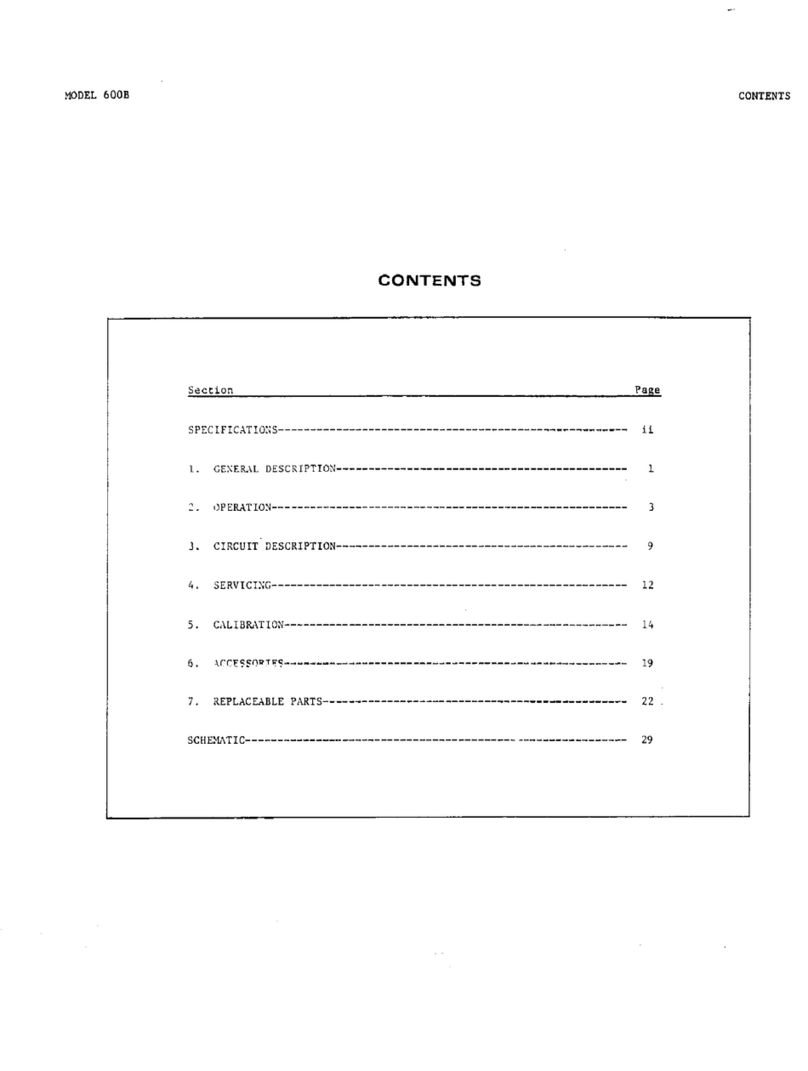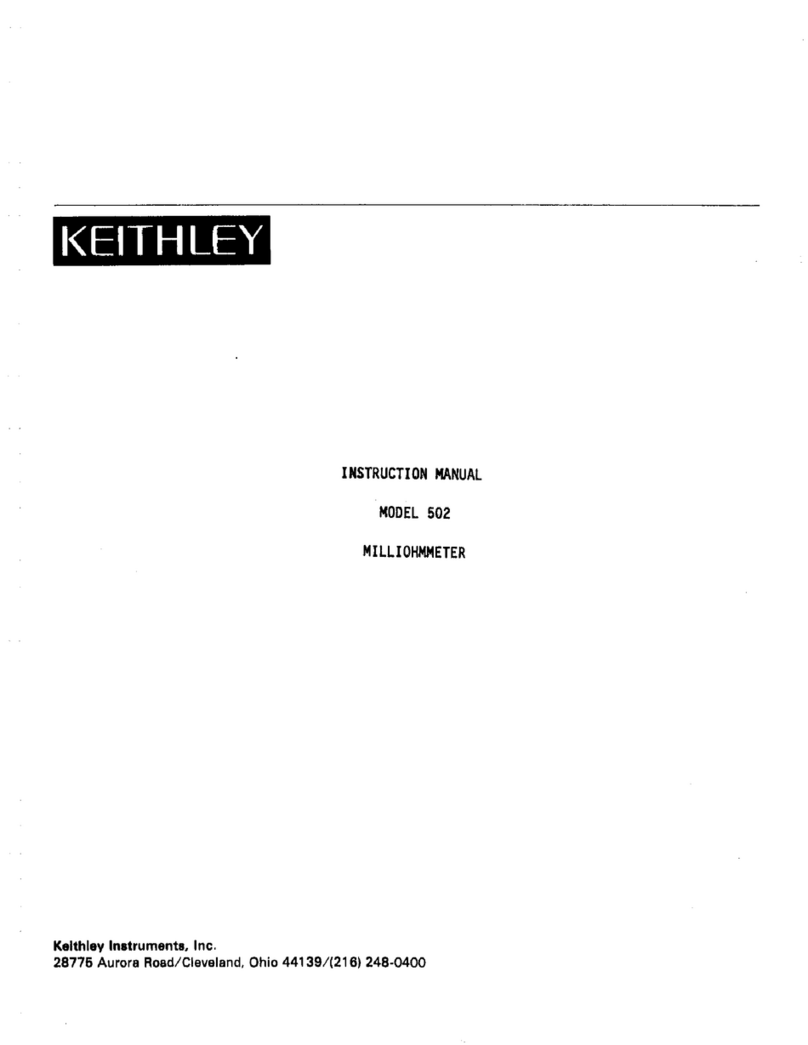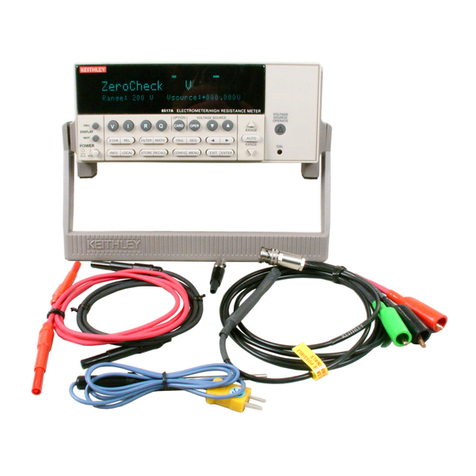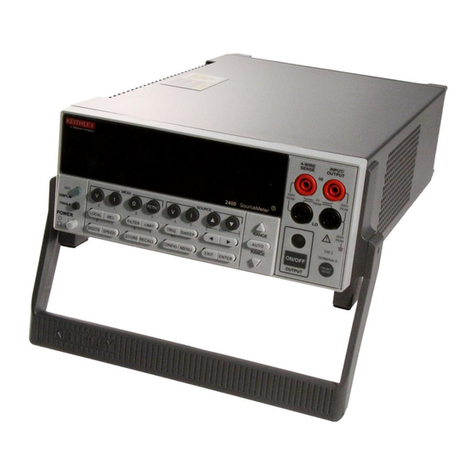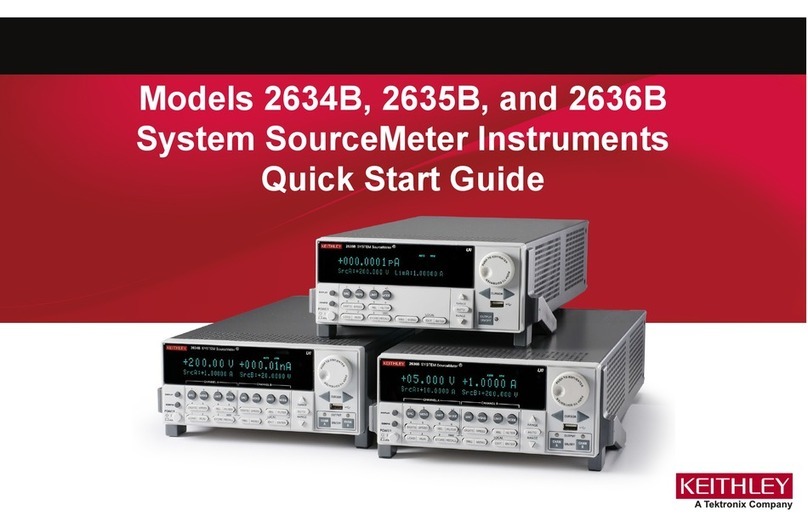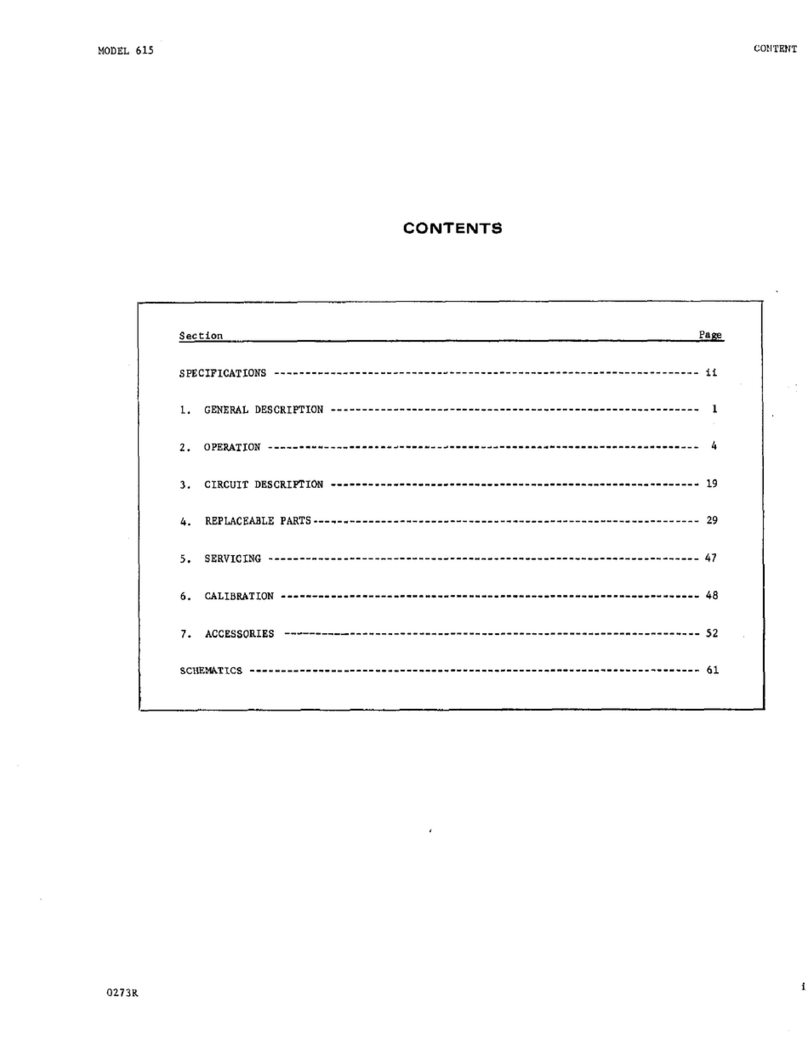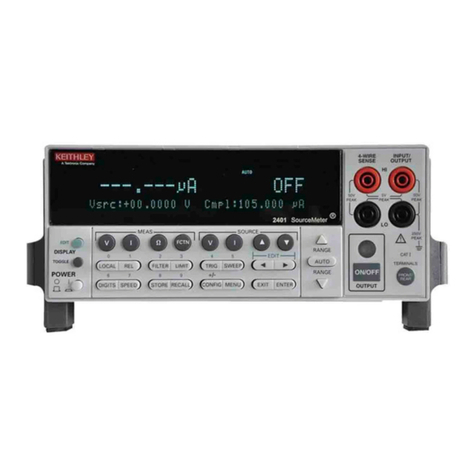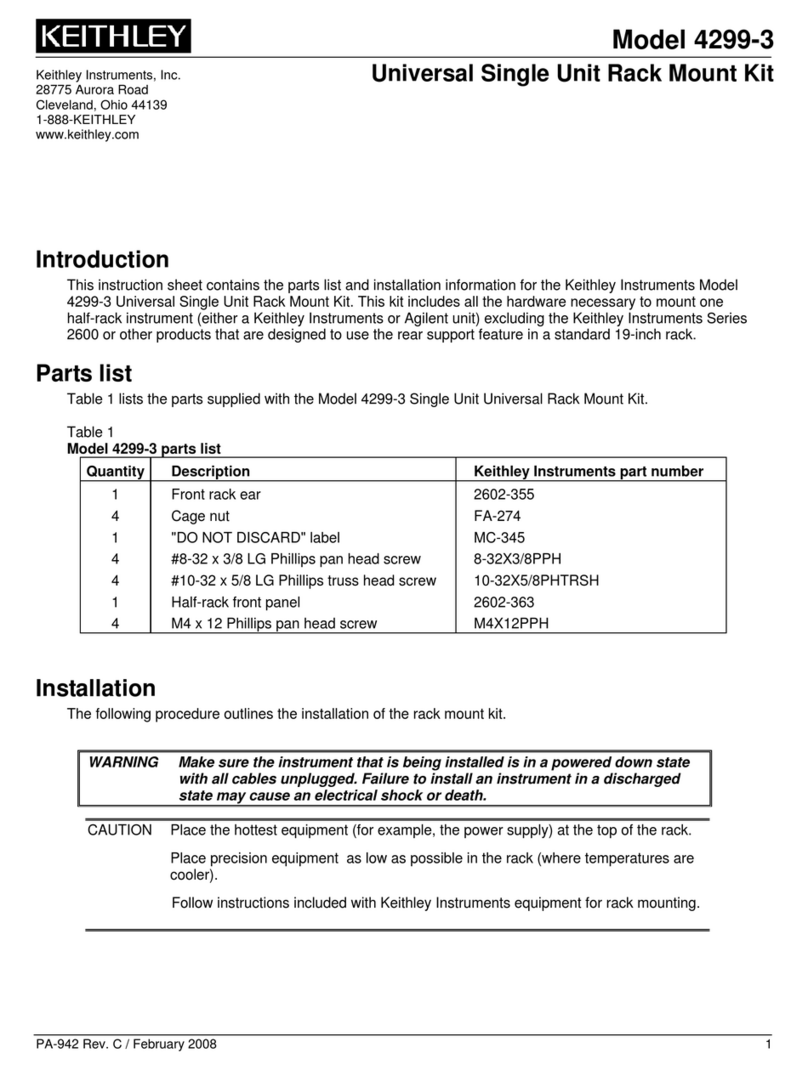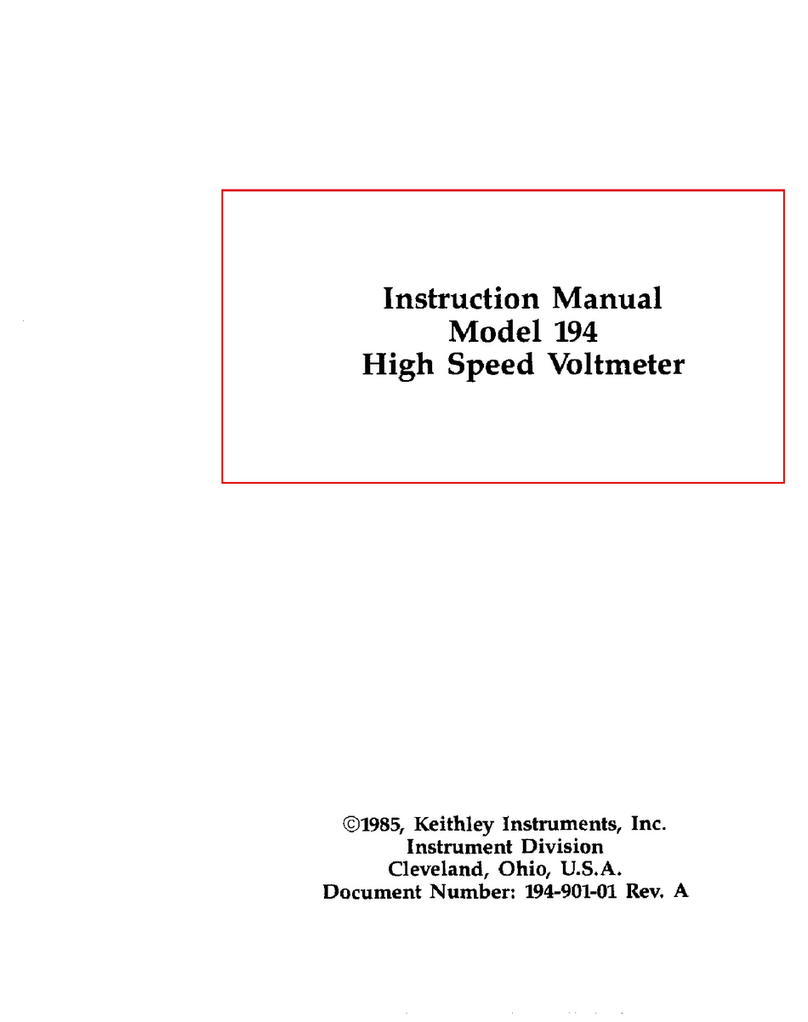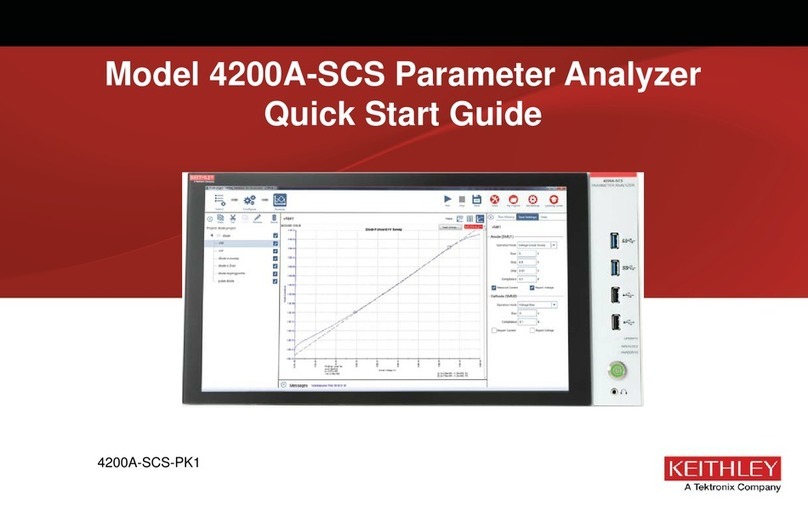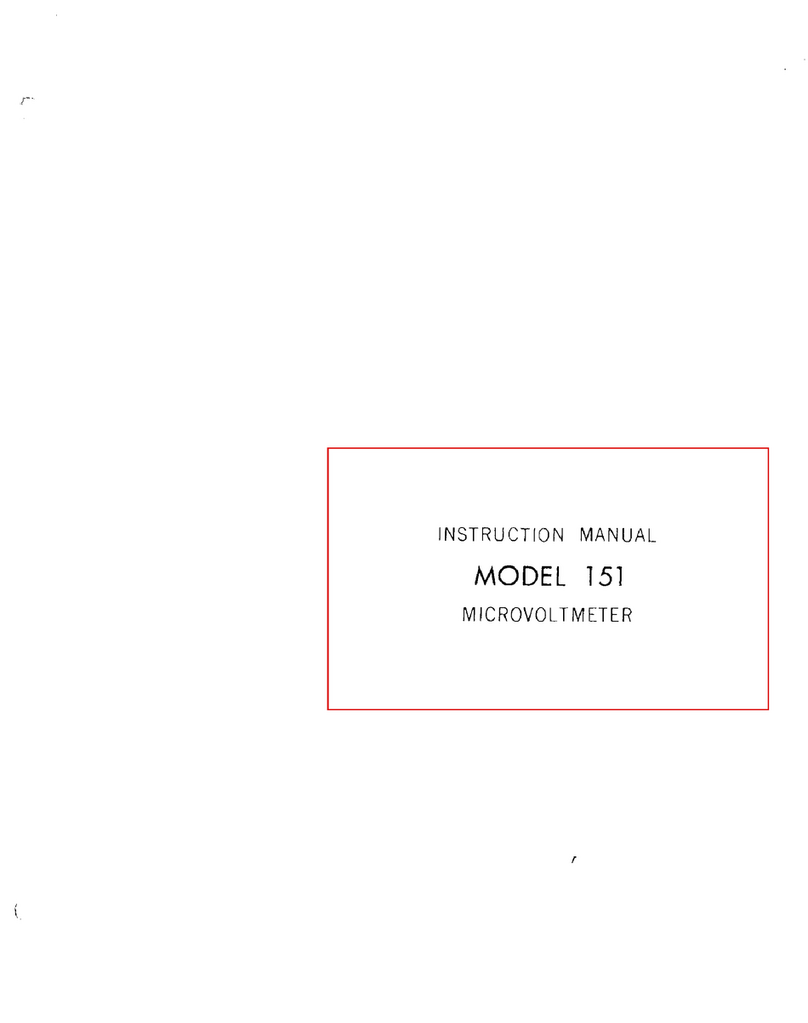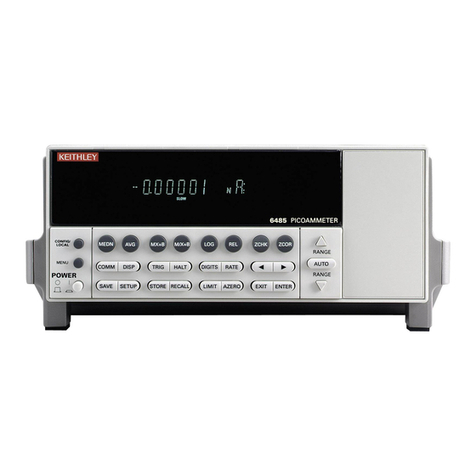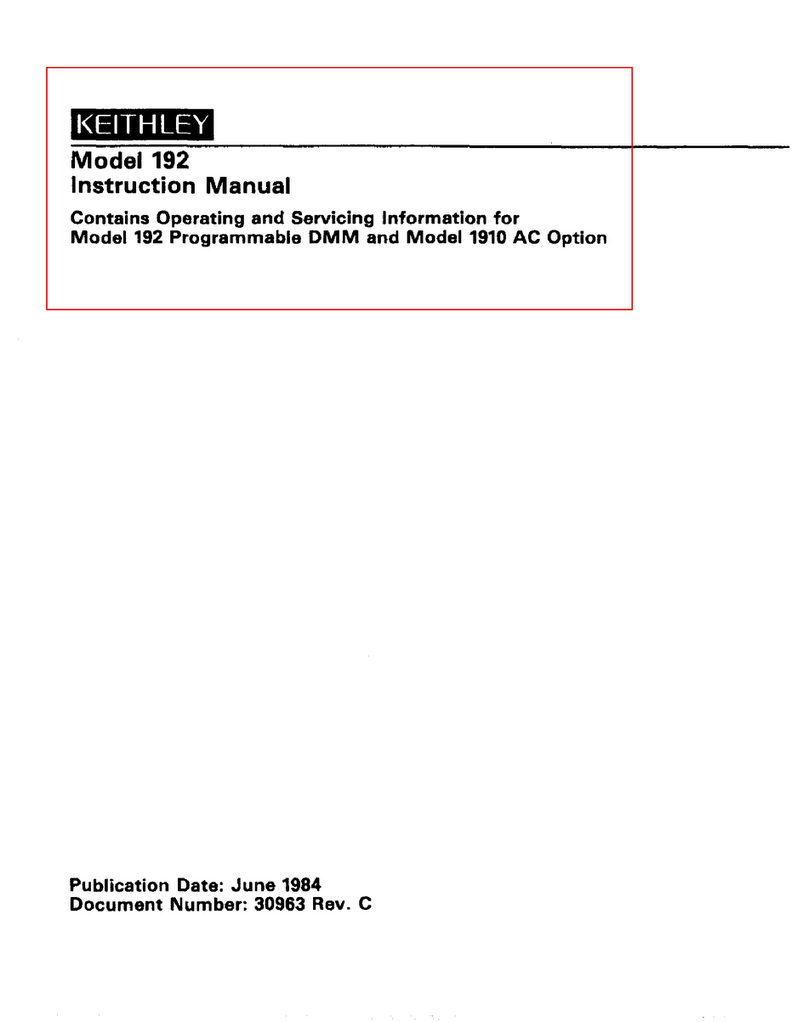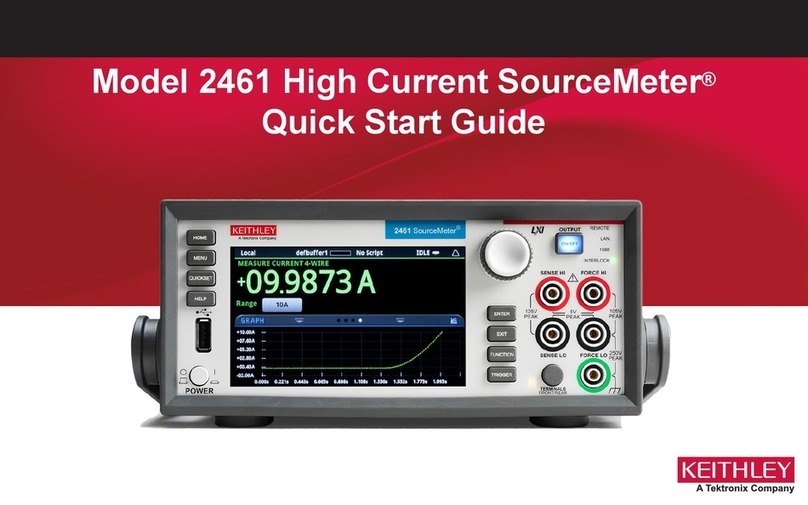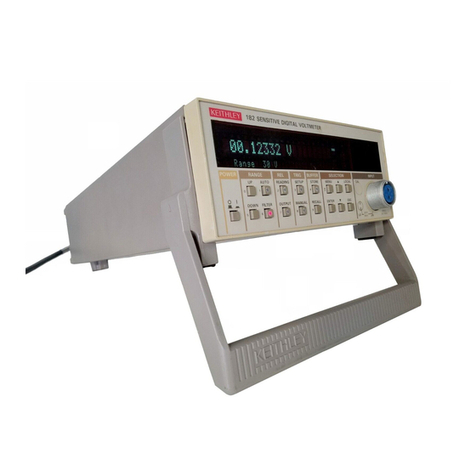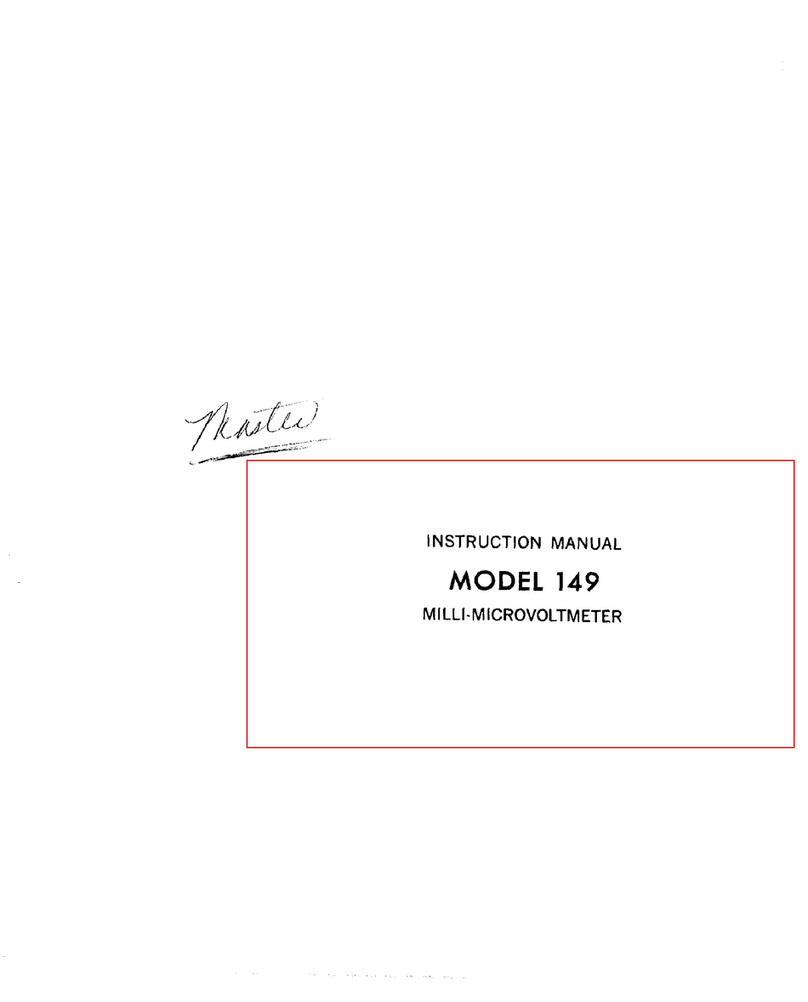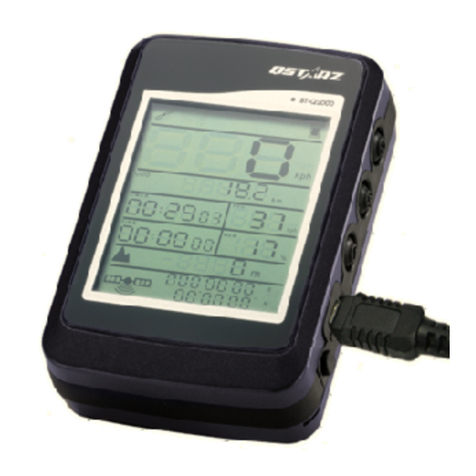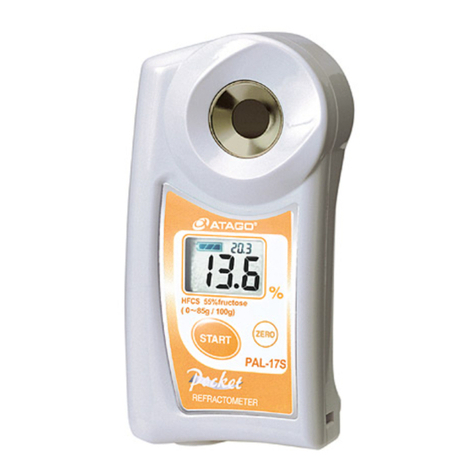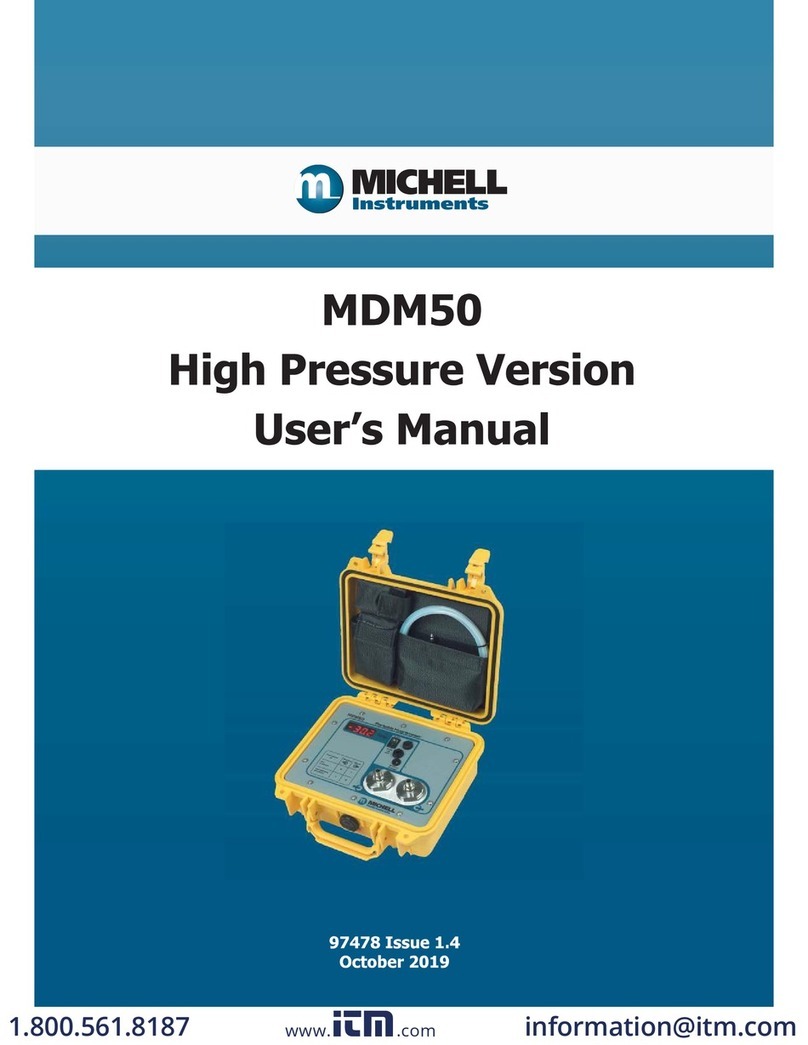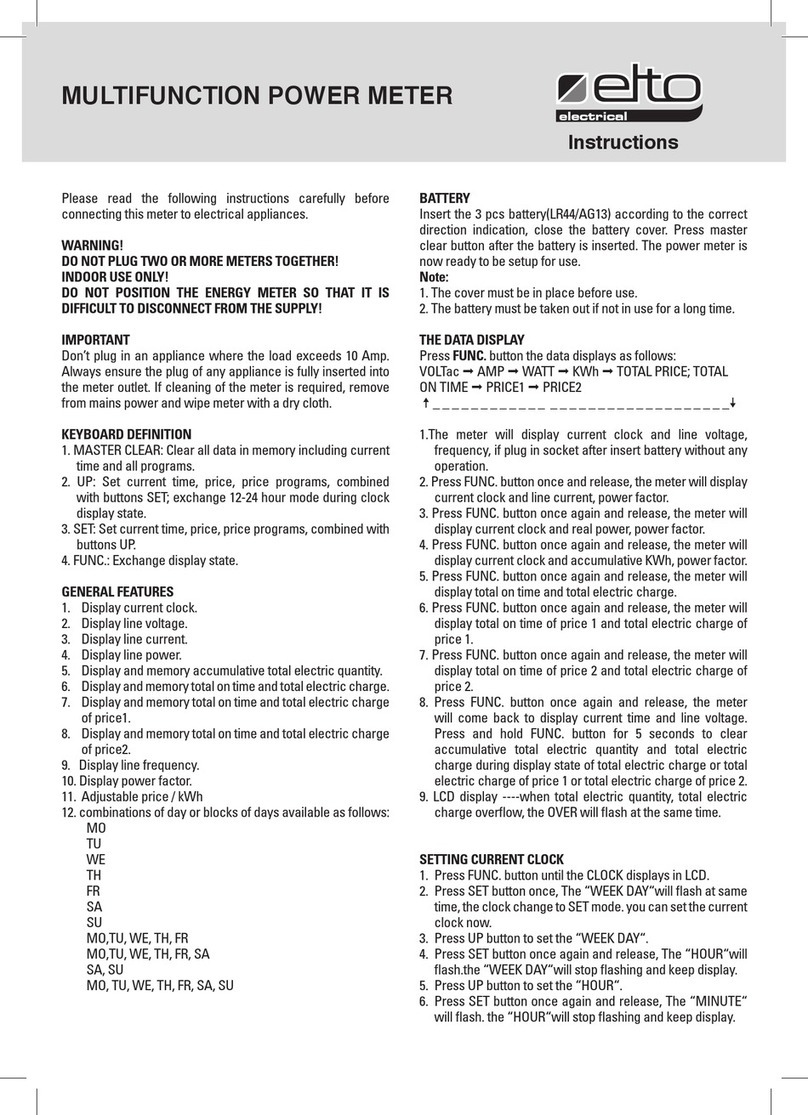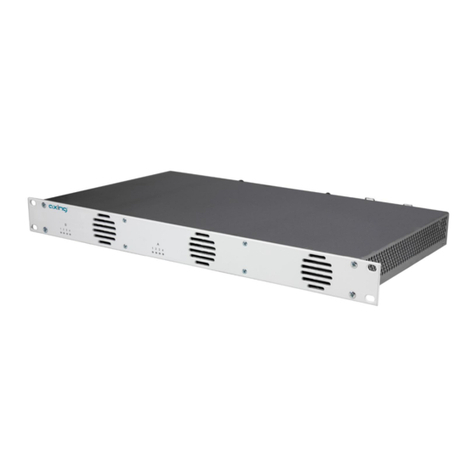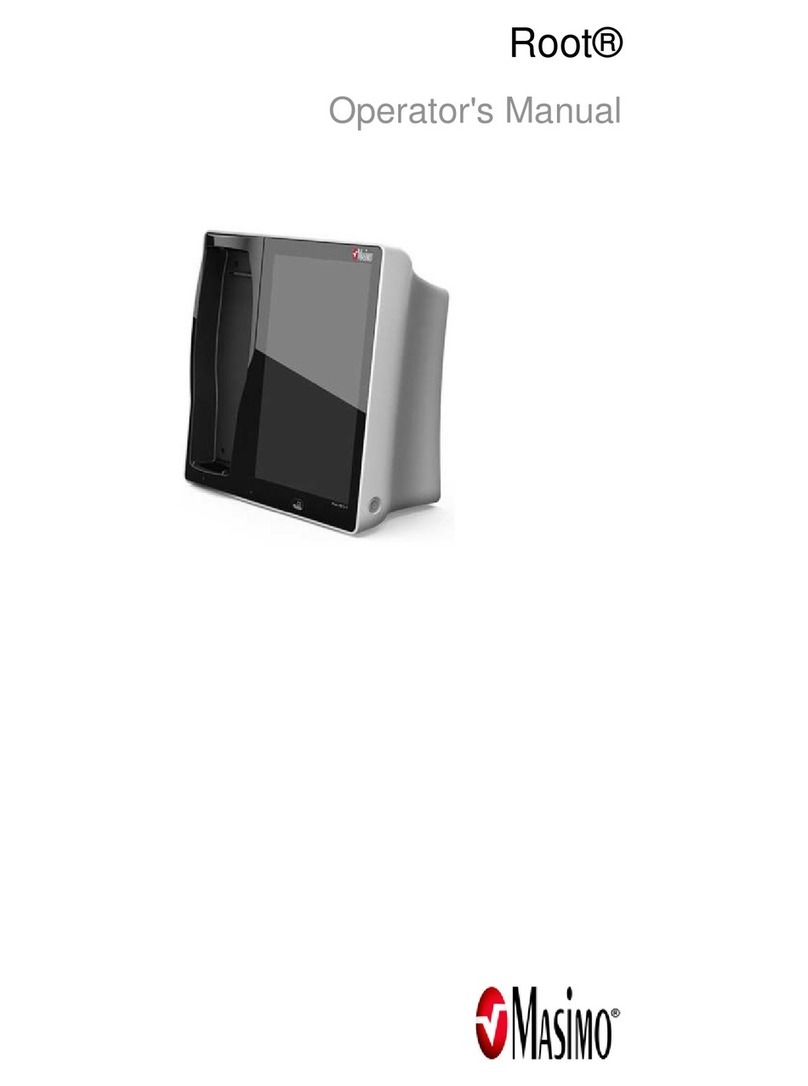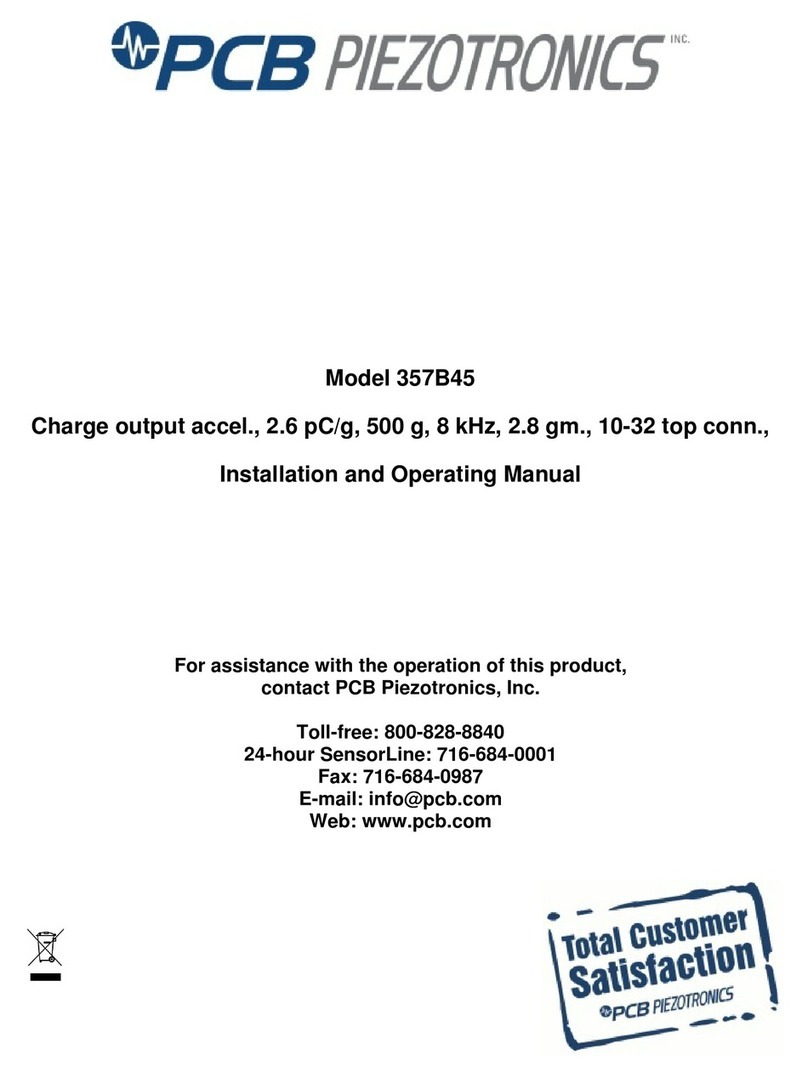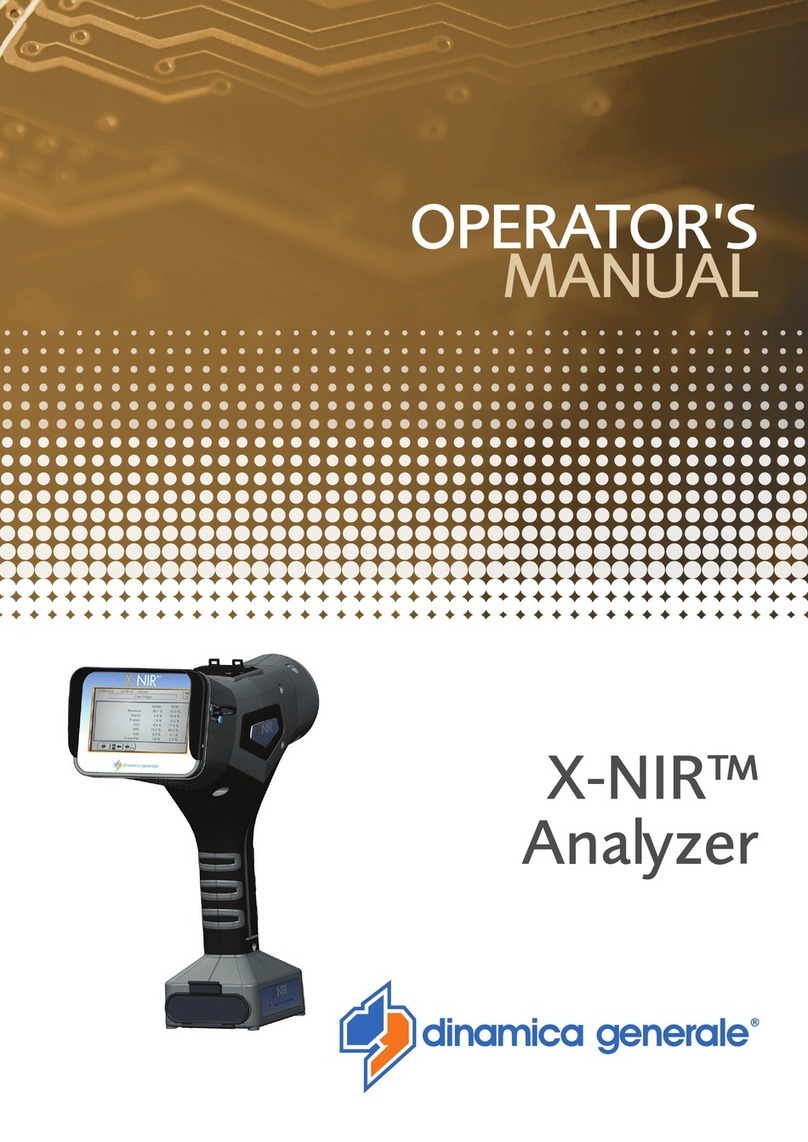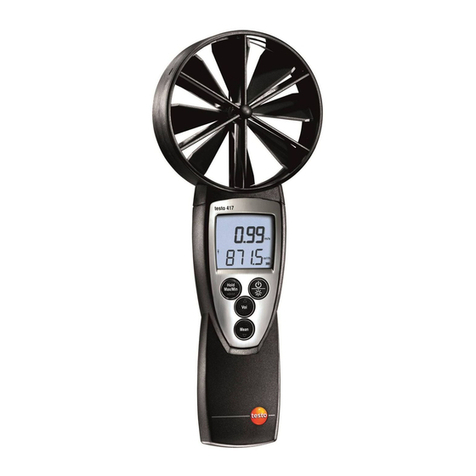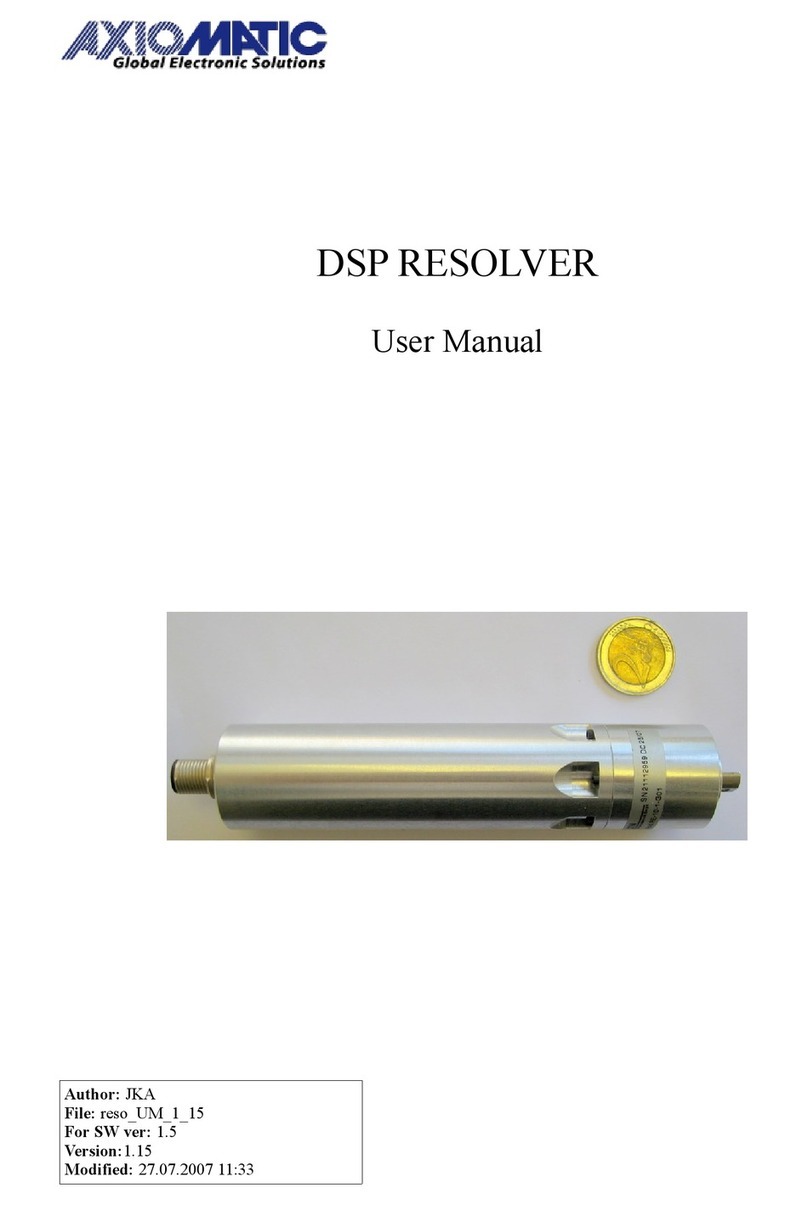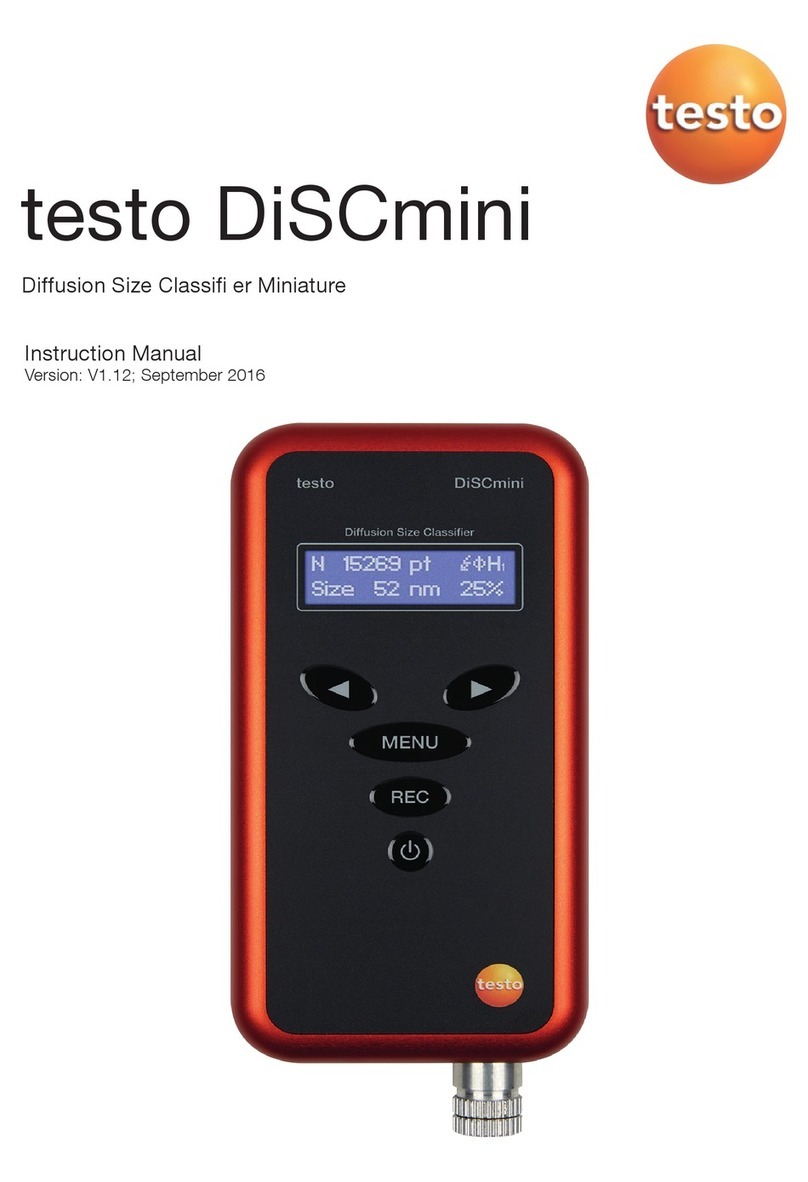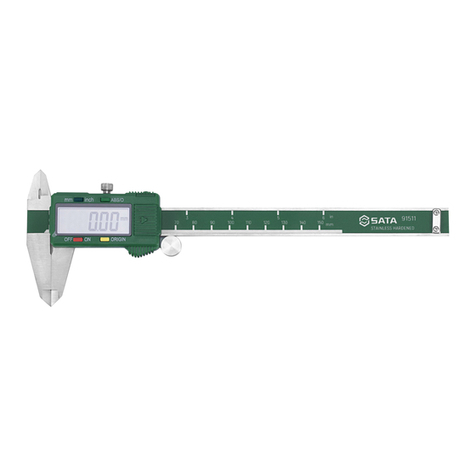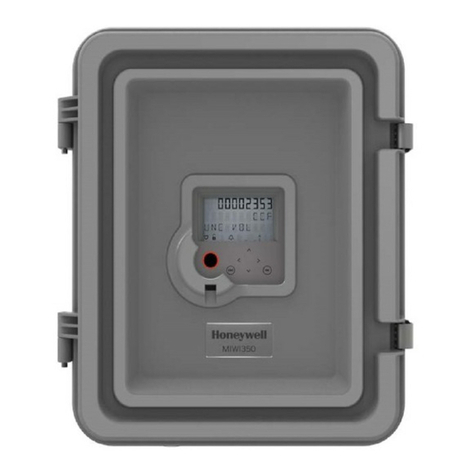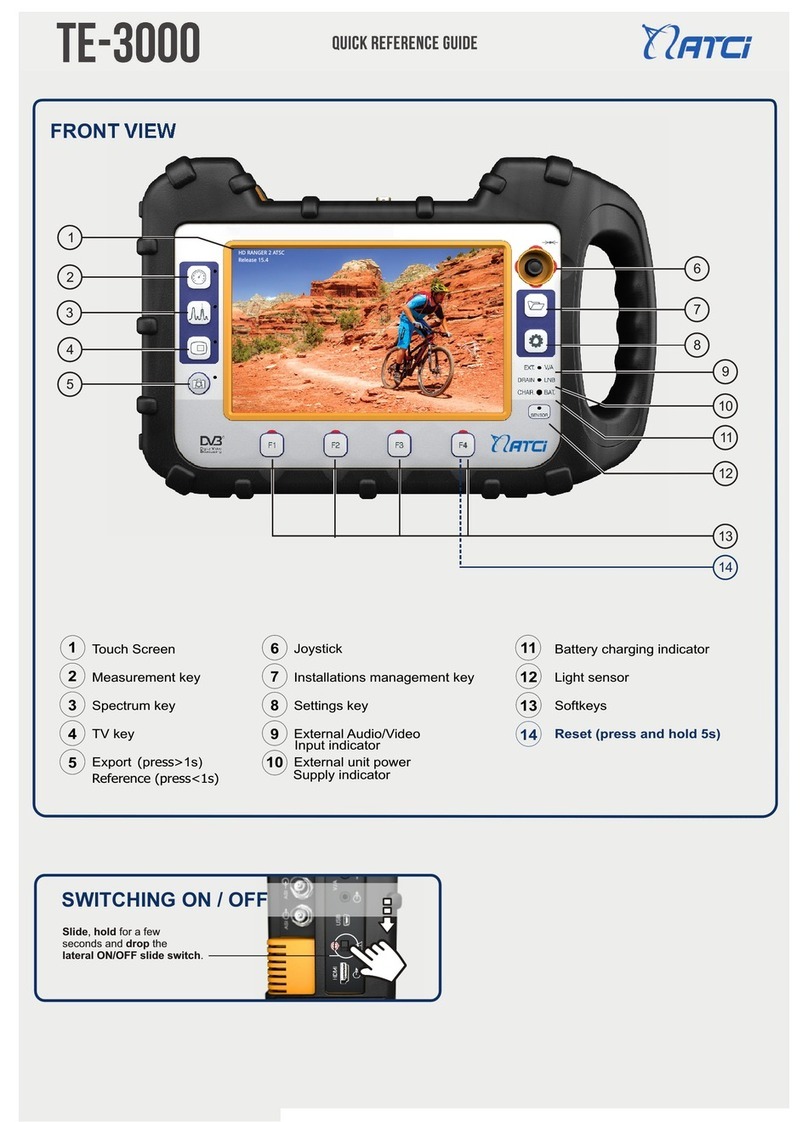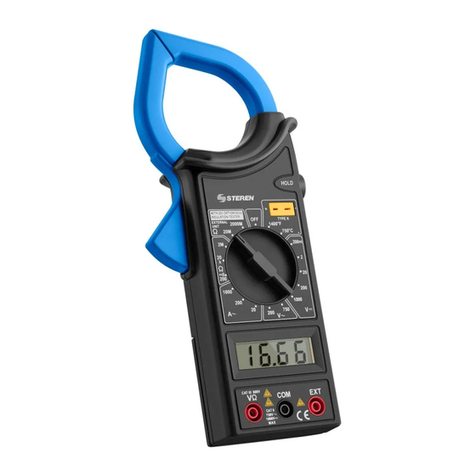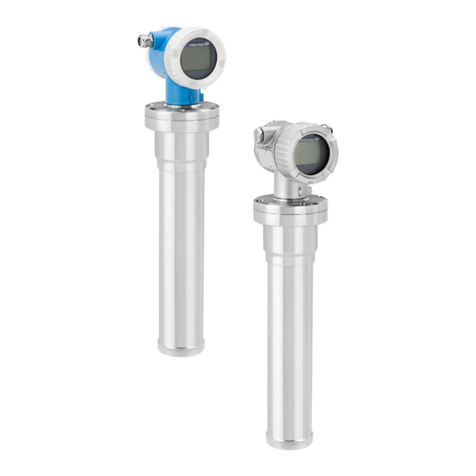
The full scale current range is the multiplier switch setting
times the range switch sening. When selecting the multiplier
switch setting, remember smaller settings permit lower
source resistances, and larger senings improve instrument
zero stability.
With the fast method, the input drop is reduced and the
response speed is increased at least 100 times. However, the
following safety precautions should be observed.
1. The internal impedance of the unknown current source
should not be less than 0.1 of the value of the feedback
resistor being used. Otherwise, adequate feedback voltage
cannot be developed at the input and zero instability
results. The feedback resistor value is the reciprocal of the
AMPERES range of the range switch.
2. The low side (pin No. 2) of the OUTPUT connector is no
longer connected to the low side of the INPUT connector.
Therefore, do not use a grounded recorder. As an alter-
native use the unity-gain output. (See paragraph 2.12).
3. Use, with caution, the fast method to measure capacitor
leakage. A very stable voltage supply must be used. Con-
necting a capacitor to the input changes the circuit to a
differentiator, resulting in extreme sensitivity to very small
voltage transients and an increase in meter noise.
2.8.3 Galvanometric Method
Operate the Model 802 as a picoammeter in the fast method.
Use an accurate reference current source such as the
Keithley Model 261 to buck out the unknown current source.
Connect as shown in Figure 2-5.
Set the METER switch to CENTER ZERO and use the higher
current ranges. Adjust the buck out current to indicate null on
the Model 602. Increase the Model 602 sensitivity as needed.
When the Model 602 is as close to null as possible, the
unknown current is equal to the algebraic sum of the Model
261 sening and the Model 602 current reading.
NULL
DETECTOR
I--- ------w
CURRENT CURRENT
SOURCE
NOTE: “SE AN ACCURATE REFERENCE CURRENT SOURCE
TO SUCK OUT THE UNKNOWN CURRENT SOURCE. THE
MODEL 602. ON ITS CVRRENT RANGES, SERVES AS A
NULL DETECTOR. USE A UHF-TEE FITTING AND MODEL
6012 ADAPTER AT THE MODEL 602 INPUT. CONNECT THE
MODEL 60.2TO THE TWO SOURCES WITH COAXIAL CABLE.
SELECT CABLE CAREFULLY FOR VERY LOW CURRENTS.
Figure 2-5. Measuring Current by the Galvanometric
Method
2.9 RESISTANCE MEASUREMENTS
The Model 802 can measure resistance by two methods.
In the constant current method, the Model 602 measures
the voltage drop across the unknown sample as a known,
constant current flows through it. The voltage drop is pro-
portional to the resistance of the sample. In this method
the Model 602 can be used in one of two different modes:
normal or fast. The normal mode is recommended for use
from 100 to 101’0. Above 101%, the fast method is pre-
ferred. It results in faster response speed and also nullifies
leakage across the Model 602 input, since the potential
across the input terminal is small.
In the preceding method, the voltage across the sample
cannot be arbitrarily set. In some cases, as in measuring
capacitor leakage, this results in excessively long testing
time. In the voltmeter ammeter method, the Model 602 is
used as a picoammeter. The unknown resistance sample is
connected to an external known voltage source and the
current through the sample is measured. Either the normal
or fast method may be used. The resistance is calculated
from the reading.
NOTE
Discharge any capacitor completely before
removina it from the circuit. Depressing the
ZERO CHECK bunon shorts the input through a
1OMQresistor, providing a discharge path.
2.9.1 Normal Constant Currant Method
Set the controls as follows:
ZERO CHECK Button LOCK
Range Switch 10’2 OHMS
Multiplier Switch
FEEDBACK Switch NORMAL
METER Switch +
Connect the high impedance side of the resistance sample to
the high terminal (center terminal) of the INPUT connector
and the low impedance side to the low terminal (inner shield)
of the INPUT connector. Unlock the ZERO CHECK button.
Check zero only with the ZERO CHECK button.
NOTE
Do not open circuit Model 602 on the OHMS
ranges; the input will increase up to 1OV due to
its constant current characteristic. Keep the
input shorted or the ZERO CHECK button lock-
ed.
The full scale ohms range is the multiplier switch times the
range switch sening. Use the smallest range switch setting
possible to obtain the best accuracy.
Before making a final reading, manipulate the multiplier and
range switches so the sample is tested at a number of teat
potentials. The applied test voltage is the percentage of full
scale that the meter reads times the multiplier switch setting.
2-7






















